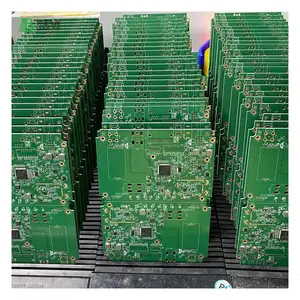Giới thiệu về bo mạch chủ intel chi phí thấp
Mua chất lượng cao, hiệu quả và mạnh mẽ. bo mạch chủ intel chi phí thấp tại Alibaba.com cho tất cả các loại sử dụng hàng dệt thương mại với độ chính xác và hiệu quả tốt hơn. Bộ sưu tập rộng rãi của. bo mạch chủ intel chi phí thấp được cung cấp trên trang web đều được trang bị công nghệ mới nhất và được vi tính hóa hoàn toàn để có kết quả đầu ra nâng cao. Những chắc chắn và tự động. bo mạch chủ intel chi phí thấp là các sản phẩm thân thiện với môi trường và tiêu thụ lượng điện thấp, do đó giảm hóa đơn.
Dung lượng cao. bo mạch chủ intel chi phí thấp được đưa lên trang web để bán được bán bởi các nhà cung cấp hàng đầu và đáng tin cậy cũng như các nhà bán buôn, những người được biết đến là cung cấp các sản phẩm chất lượng nhất quán. Những công nghệ tiên tiến. bo mạch chủ intel chi phí thấp được trang bị máy tính để tự thực hiện tất cả các thao tác và vẫn thực hiện các khâu chính xác, đan, dệt, v.v. với sự giám sát tối thiểu. Những cái này. bo mạch chủ intel chi phí thấp cũng là những lựa chọn lý tưởng để cắt giảm chi phí lao động, vì chúng có thể thực hiện các chức năng thêu khác nhau một mình. Những chiếc máy này có nhiều loại kích thước có thể gia công và khu vực thêu khác nhau tùy thuộc vào các sản phẩm cụ thể đang được gia công.
Tại Alibaba.com, bạn có thể chọn từ nhiều loại khác nhau. bo mạch chủ intel chi phí thấp có sẵn ở các kích thước, mô hình, hình dạng, màu sắc và tính năng riêng biệt. Những máy này có sẵn với các mẫu nhiều đầu có số kim riêng biệt có thể là 12, 24 hoặc hơn. Người mạnh mẽ. bo mạch chủ intel chi phí thấp được cung cấp ở đây đi kèm với bộ nhớ máy tính của hơn 100 triệu mũi may và tốc độ tối đa 1000 vòng / phút, tùy thuộc vào kiểu máy. Bạn cũng có thể sử dụng các biến thể tùy chỉnh của các chứng nhận CE này. bo mạch chủ intel chi phí thấp để đáp ứng yêu cầu của bạn.
Khám phá khối lượng lớn. bo mạch chủ intel chi phí thấp tùy chọn tại Alibaba.com và xem các sản phẩm tốt nhất cho bạn trong điều kiện ngân sách của bạn. Các sản phẩm này được chứng nhận ISO, CE, ROHS và có sẵn theo đơn đặt hàng OEM. Các dịch vụ sau bán hàng như lắp đặt tại chỗ, bảo trì cũng được cung cấp.

















 Sẵn sàng vận chuyển
Sẵn sàng vận chuyển